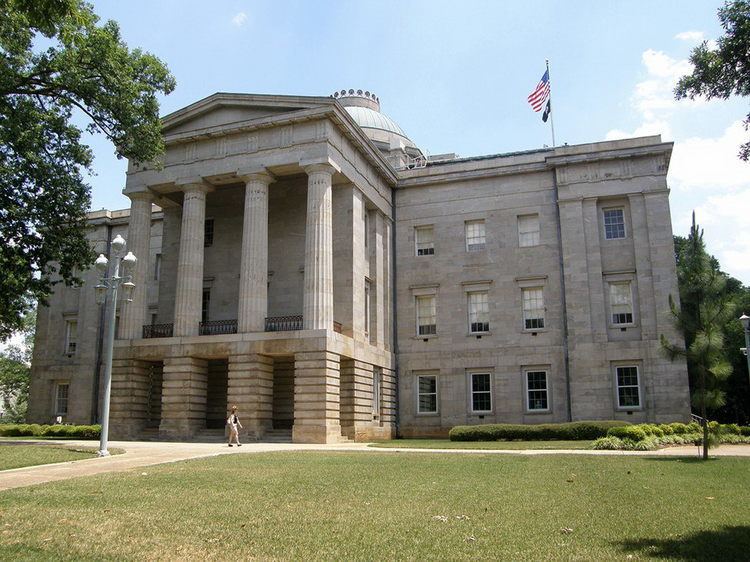Built 1833 NRHP Reference # 70000476 Designated NHL November 6, 1973 Opened 1833 | Architectural style Greek Revival Added to NRHP February 26, 1970 Area 2 ha | |
 | ||
Address 1 E Edenton St, Raleigh, NC 27601, USA Hours Open today · 9AM–5PMFriday9AM–5PMSaturday9AM–5PMSundayClosedMonday9AM–5PMTuesday9AM–5PMWednesday9AM–5PMThursday9AM–5PMSuggest an edit Similar North Carolina Museum, Marbles Kids Museum, Pullen Park, Frankie's Fun Park, William B Umstead State Park Profiles | ||
C span cities tour raleigh history of the north carolina state capitol
The North Carolina State Capitol is the former seat of the legislature of the U.S. state of North Carolina. Currently housing the offices of the Governor of North Carolina, it is located in the state capital of Raleigh on Union Square at One East Edenton Street. The cornerstone of the Greek Revival building was laid with Masonic honors by the Grand Master of North Carolina Masons Simmons Jones Baker on July 4, 1833. Construction was completed in 1840. It was designed primarily by the architectural firm of Ithiel Town and Alexander Jackson Davis. Often credited solely to that team, the design of the capitol was actually the result of a sequence of work by William Nichols, Sr. and his son William Nichols, Jr., Town and Davis, and then David Paton. The Capitol housed the entire state government until 1888, and the North Carolina General Assembly met in the capitol building until 1961. The legislature relocated to its current location in the North Carolina State Legislative Building in 1963. The North Carolina Supreme Court has also convened in the building in the past, most recently meeting in the capitol's senate chamber in 2005 while the Supreme Court Building was undergoing renovations. The Governor and the governor's immediate staff has continued to occupy offices in the building. The Capitol remains largely unaltered from its 1840 state. Only three rooms have been significantly altered through remodeling: the two committee rooms in the east and west wings of the second floor, which were divided horizontally to provide space for restrooms, and the office in the east wing of the first floor, part of which had to be cut away to permit space for an elevator to be installed in 1951.
The Capitol was declared a National Historic Landmark in 1973. It is located in the Capitol Area Historic District.
